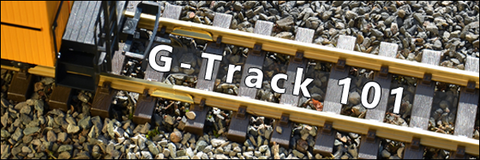Track Facts 2: All Brass is NOT Created Equal.

Track Facts: A Series Explaining the Truth Others Don't Want You to Know.
Why Our Rail is the BEST Choice!
In our last Track Facts, we discussed how Brass is, all things considered, the best material for G-Scale track rails. (To see that article, click the link here.)
In this episode of Track Facts, we will explain some of the reasons we can say that all brass is NOT created equal.
It’s All About the Recipe!
There’s probably someone who is well-known among your family and friends for a certain recipe. And you may have tried other recipes that go by the same name, but they just aren’t the same. Some may come closer than others, and some you can barely even eat. It’s much the same with metals (not the eating part – don’t do that!😊).
Brass is an alloy, a mixture, made mostly of copper and zinc. A wide range of alloys can correctly be called “brass”, but changing the percentages of what’s in the alloy, even just a percent or two, can give vastly different results. Most of them are less than ideal for G-Scale train rail.
No model train brand actually mines the metal ore, refines it and processes it into the finished rail material. Every brand depends on a specialized metal supplier to provide the finished rail. But not every brand gives their metal supplier extremely tight specifications that make for an ideal brass rail alloy. For example, copper is expensive, so a supplier naturally wants to provide a lower-copper alloy. As the copper content drops down around 60% or lower, it’s still brass, but a much poorer conductor, less malleable, and with a lot of other problems that make it far worse for model train rails.
Most model train brands don’t even have the technical knowledge to know what they should demand. And not every brand inspects the rail and does metallurgical testing to ensure that their specifications are being followed. Whether from simple ignorance and not knowing how critical this is, or from a desire to cut costs, or various other reasons, some well-known brands have failed to ensure that their rail is an ideal and consistently high-quality material.
It’s also not easy to find a metal supplier who will meet the demanding standards needed for an ideal brass rail. This requires the resources of what is usually a massive multi-national industrial conglomerate, combined with a willingness to deal with the comparatively small tonnages of rail material needed for the G-Scale train business. There are only a handful of suppliers in the world who have the technical ability to do this. But if no one checks and really insists that every piece of rail meets the standards, then the supplier will absolutely deliver a cheaper, sub-standard rail material, as sure as the sun coming up in the morning. And the worldwide list of suppliers who will actually continue to meet the most exacting standards is truly short.
You may be starting to see how “Brass is Brass” thinking is completely wrong… Next time we discuss ‘Virgin Brass’ rail, and why it matters…





